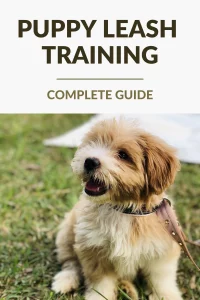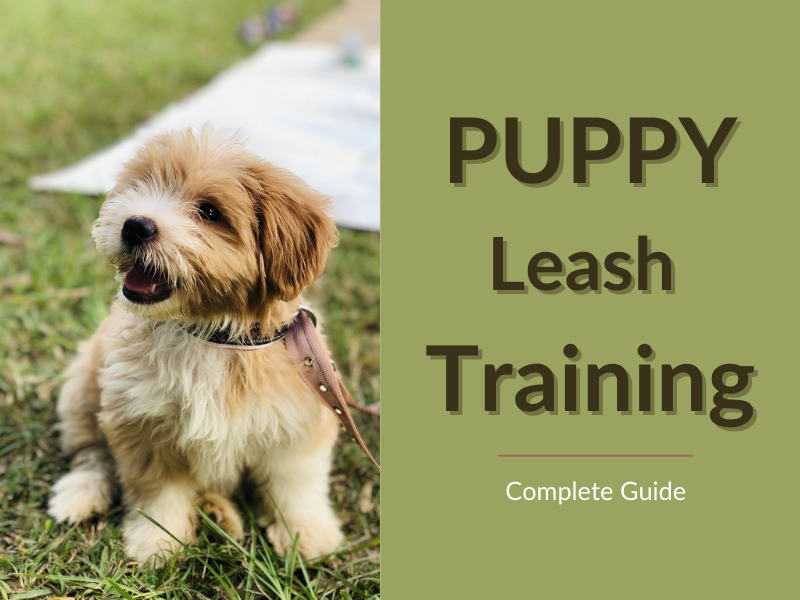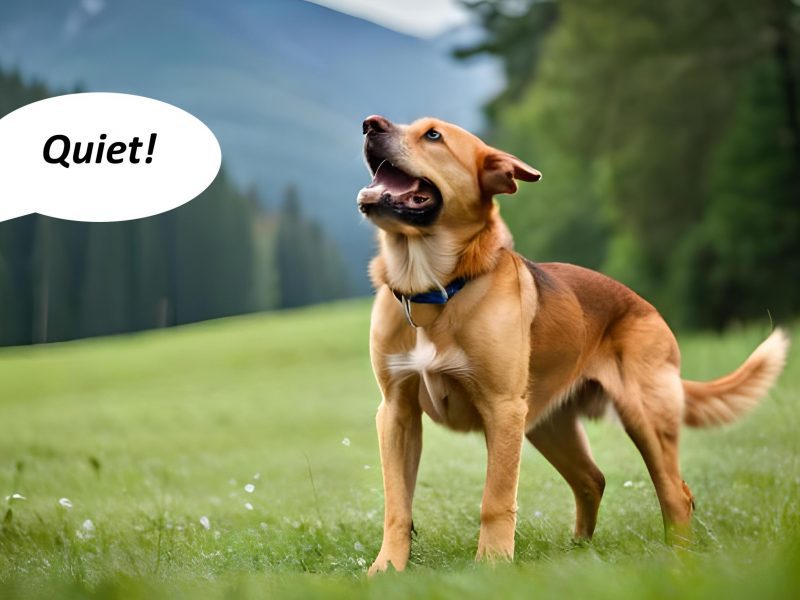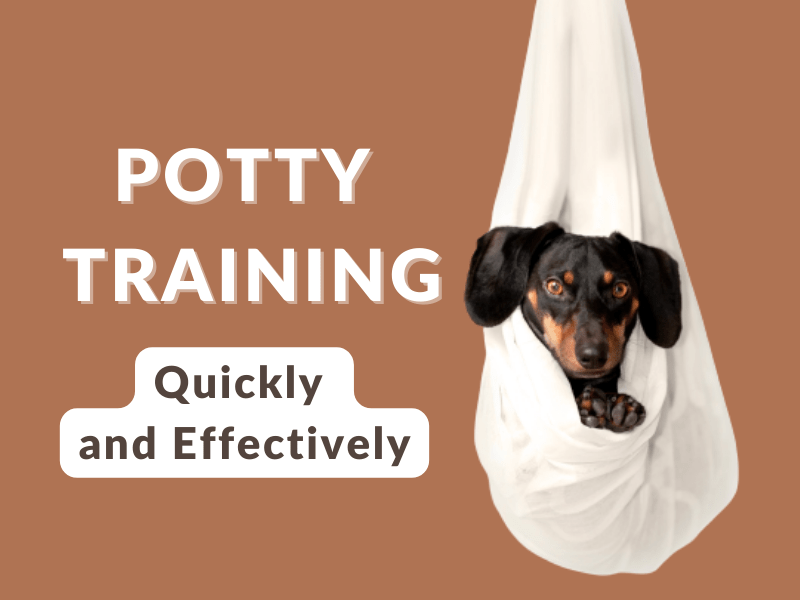Training your puppy skills like walking on the leash is essential for the puppy’s safety and makes it easy to control the dog since, as a dog owner, there are many occasions where you will be outdoors in new places with your puppy. Leash training for puppies can start as early as 16 weeks old. A dog owner must teach leash skills as it is an important milestone. Puppies are not born with the ability to walk on a leash or understand human language; therefore, take them through slowly, step by step. How do you train your puppy how to walk on a leash: First, bond with the puppy, then gradually introduce the collar and a leash during play, introduce a sound associated with leash training, offer the puppy treats and praise as a reward through each step, repeat the process until the puppy masters the skill. Puppies generally learn faster compared to older dogs. The dog owner’s primary role is to encourage, support, and motivate the dog and not include negative reinforcement at any point.
Importance of leash training your puppy
- It provides the opportunity for a daily dog walk for your puppy and gives the dog owner a chance to exercise.
- It increases your opportunity to socialize as it is the chance to be outside the home.
- It makes the visits to the vet easier as they will have mastered how to behave around other dogs.
- Taking walks impacts the health of your puppy and prevents the onset of neurodegenerative disorders.
How long does it take to train a puppy to walk on the leash?
Since puppies learn fast, it takes four to six weeks to learn proper leash walking etiquette. It would take them less time, especially with the right motivation.Items you need when you train a puppy to walk on the leash
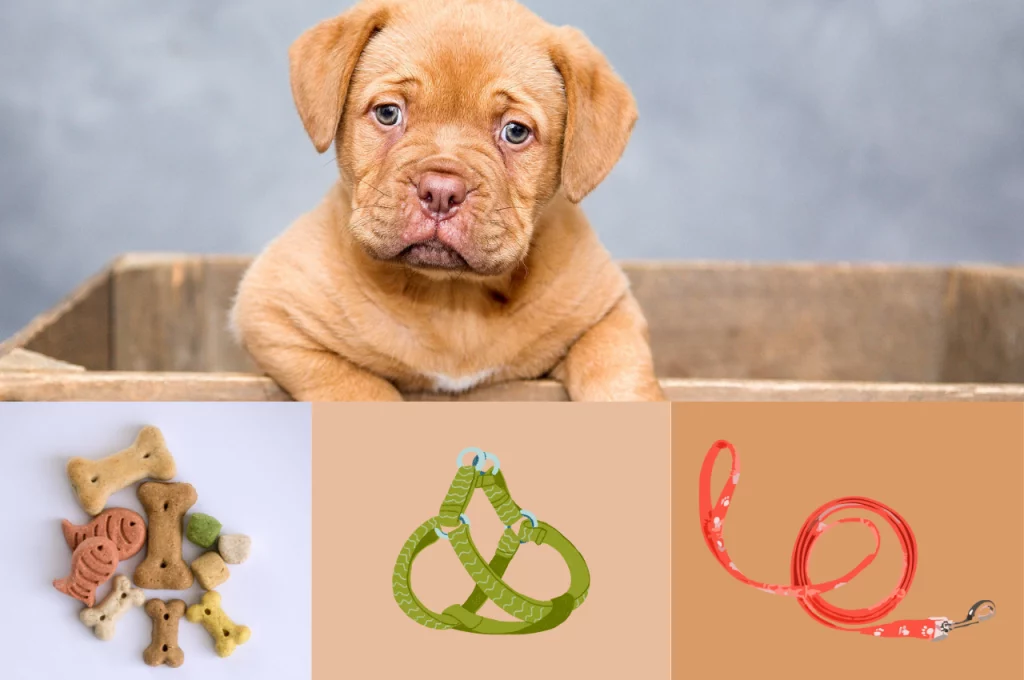
- Treats to be used as a reward for the dog and keep the dog optimistic throughout the process.
- A marker for good behavior
- A well-fitting collar or a harness. A harness is an excellent choice for puppies. Dog owners should avoid chock, prong, and shock collars as they are too harsh for dogs.
- A good quality leash
Specific things to consider when choosing a leash
- The purpose of the leash- Do you want to use it for leash training?
- The material used to make the leash
- The type of fastener the leash has
- The material should either be nylon or leather.
Step by step guide to leash walking training
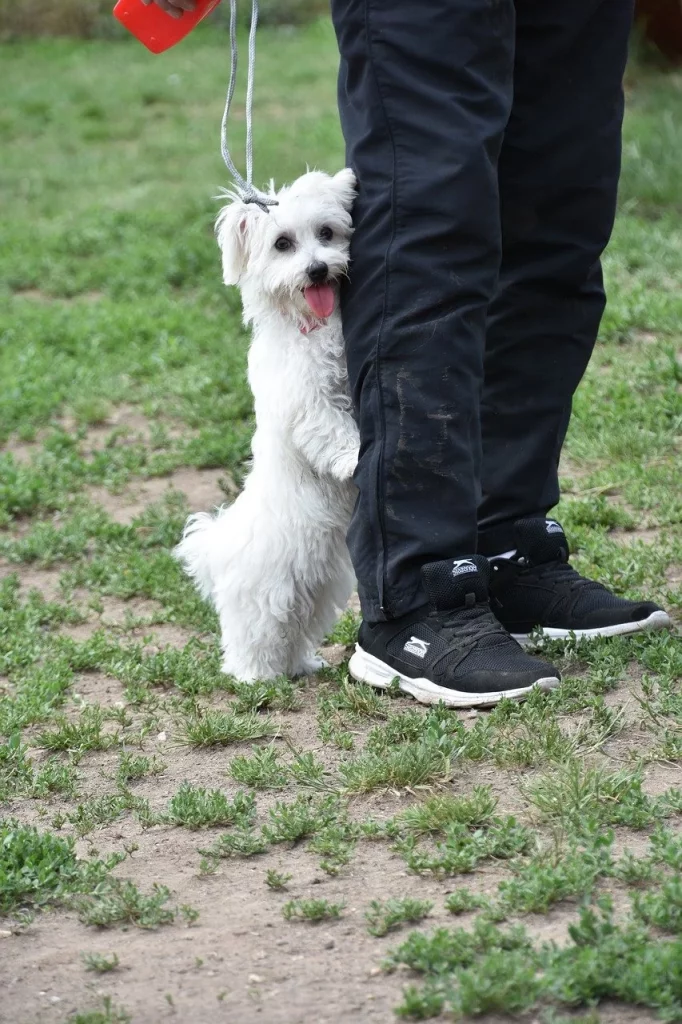
1. Building Block exercises
Before you start the actual leash training process, you need to do some foundational building block exercises that will help your puppy to learn-for example, teaching them what “yes” means. With dogs and puppies, it is easier to understand a new behavior than to fix bad behavior; as the saying goes, you cannot teach an old dog new tricks. It is good to ensure to take small steps in the right direction with your puppy or you can try with basic commands training.2. Bonding
Ensure that the puppy is comfortable with the trainer by introducing the play. Play and treats should make the puppy bond with the trainer, which is essential, especially in a different location away from home.3. Introducing the collar
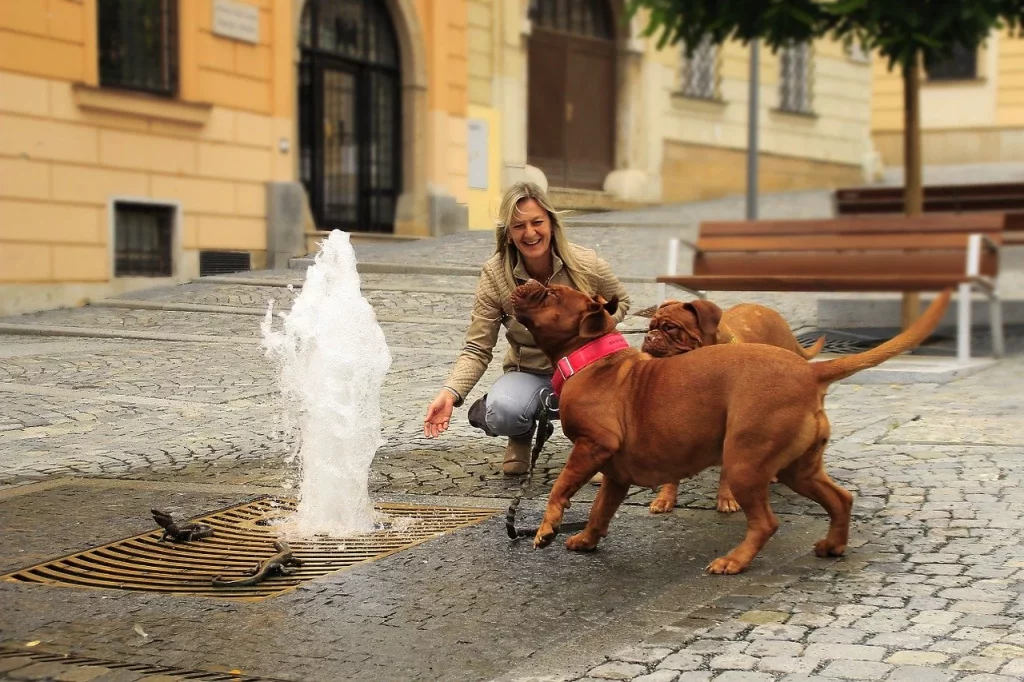 Get the puppy comfortable wearing the collar and a leash. Introduce the puppy to the collar or harness and a leash while at home during play for short times. Give the puppy treats while introducing the harness. Keep the sessions positive and short of making the leash time fun and an opportunity to get goodies.
Get the puppy comfortable wearing the collar and a leash. Introduce the puppy to the collar or harness and a leash while at home during play for short times. Give the puppy treats while introducing the harness. Keep the sessions positive and short of making the leash time fun and an opportunity to get goodies.
4. Sounds and Cues
Introduce a cue or sound. Make sure to have a treat on hand. With the puppy wearing a collar and a leash, make the sound, and when the puppy turns towards you, offer them a treat; this will make them move towards you.5. Offer rewards and keep the sessions short
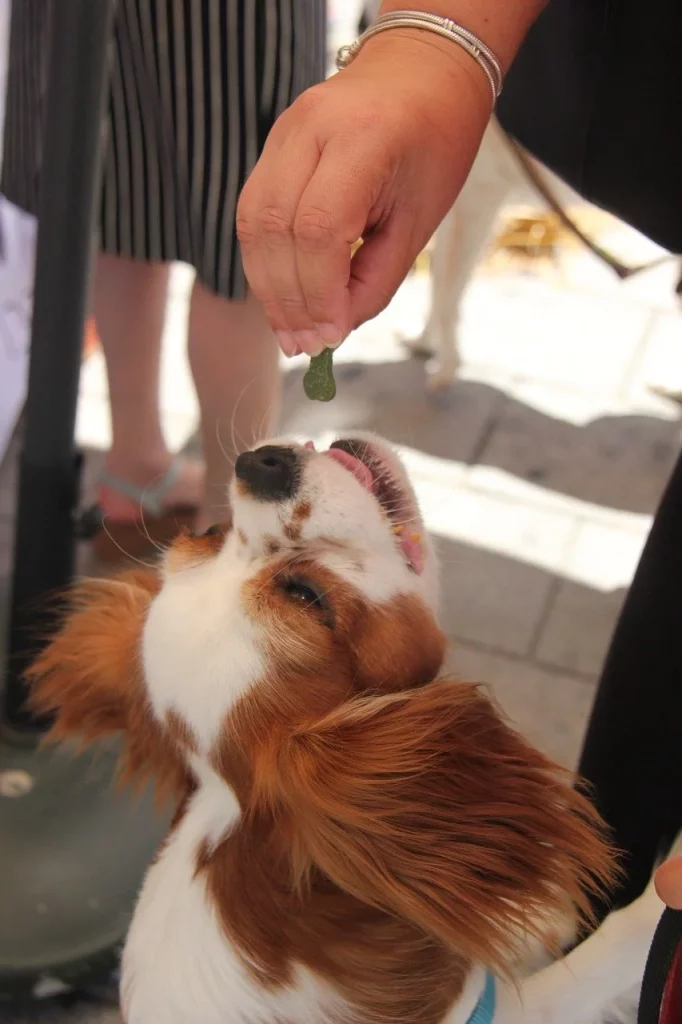 When the puppy comes towards you, reward them and start taking a few steps with them. Puppies have a low attention span, therefore keeping the session short and when they are most active. Practice indoors for as long as possible before taking them outdoors.
When the puppy comes towards you, reward them and start taking a few steps with them. Puppies have a low attention span, therefore keeping the session short and when they are most active. Practice indoors for as long as possible before taking them outdoors.
6. Outdoor training / Heel training your puppy
After several indoor sessions, your puppy should be ready to train outside. Puppy walking on heel refers to walking on your side instead of in front of you or pulling. But it is important to note that dogs can walk in other positions and not just on the heel, depending on the location. Walking on heel position comes in handy when you need to walk fast, such as through a crowded restaurant.7. Changing the environment
When your dog has mastered how to walk on the heel and off-duty leash walk, provide a change of environment for practice. Take this step when the dog does not pull when on both off duty and on the heel. But this does not mean that the dog will not pull. When in a different environment, expect the dog to pull. An example of a place you can take them is a park. They are likely to get distracted by other dogs and see many people. Offer the dogs treats when they walk beside you. When the dog starts pulling due to anxiety or distraction, stop and let them come to you. Give them positive reinforcement for positive behavior. Also, exercise patience time and again.Steps to take when during the outdoor training
1. Decide which side the dog will walk on.
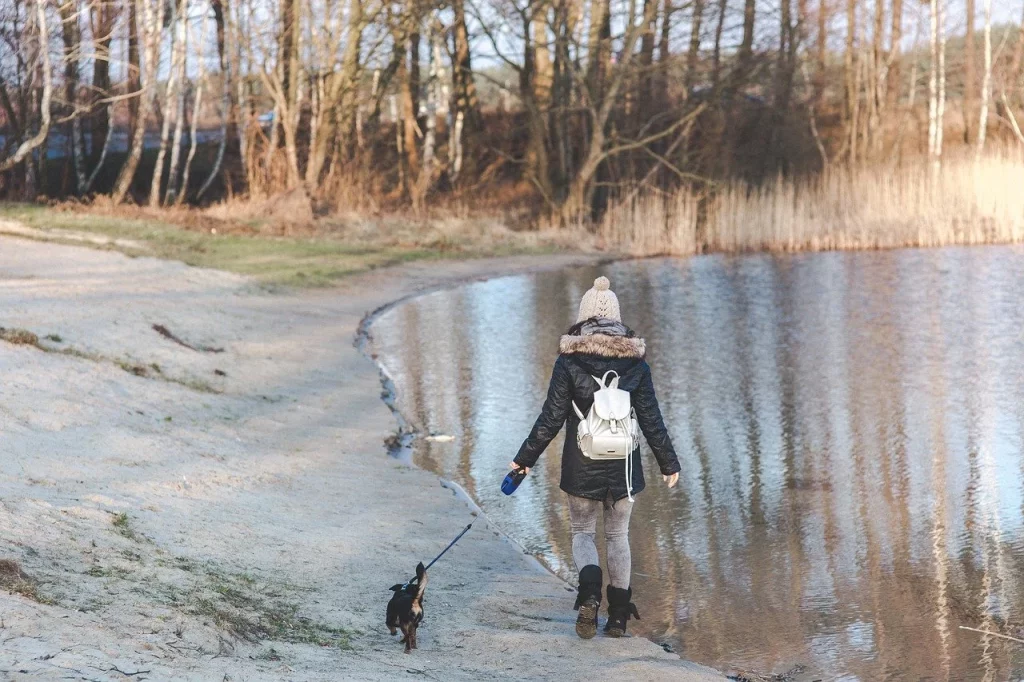 Most dog owners prefer their dogs walking on the left side; if this is your preference, hold your treats on the left side. Make sure to keep the leash in the opposite hand the dog is. If the dog is on the left, hold the leash on the right.
Most dog owners prefer their dogs walking on the left side; if this is your preference, hold your treats on the left side. Make sure to keep the leash in the opposite hand the dog is. If the dog is on the left, hold the leash on the right.
2. Take the first step and offer treats
Take the first step slowly, then stop. Since the puppy might not be in position, offer the puppy a treat to stay in place. Every step you take, show the puppy a treat when the puppy takes a step in the positive direction. Avoid pulling the puppy with the leash. If the dog pulls, stop, do not move. Instead, lure the puppy towards you with a treat, but do not offer the puppy the goodie yet. Make a few steps, then stop and show them the treats. Keep the session as positive and fun as possible.3. Increase the number of steps
When the dog gets eager to have the treats, make two or three steps, then stop and offer them a treat. Gradually increase the number of measures based on your puppy’s learning. Also, remember to give the walk a name to stay familiar. For example, you can use the name “let’s walk“.How do you teach the off-duty leash walk when outdoor?
There are times when you would prefer to give your dog a more relaxed walk as there are moments when you will be outdoors, maybe at the park. Your puppy needs to be familiar with different walks and adapt when needed.What are the steps to take when teaching this more relaxed walk?
- Choose a word that will signify the change; this word should be different from the other word used before. For example, you can use the word ” at ease.”
- Hold the leash loosely. As a dog owner, it is upon you to decide how much leash you will let loose; you could hold the leash at the top and let the rest hang loosely.
- If your dog starts pulling forward, lure them back towards you with a treat. The critical point is to teach your dog to have the puppy’s attention on you at all times.
- If your dog gets distracted, move as far as possible from the object or person. Create distance, then call the pup’s name. If calling their name does not work, offer them some treats.
Off-leash training for your puppy when outdoor
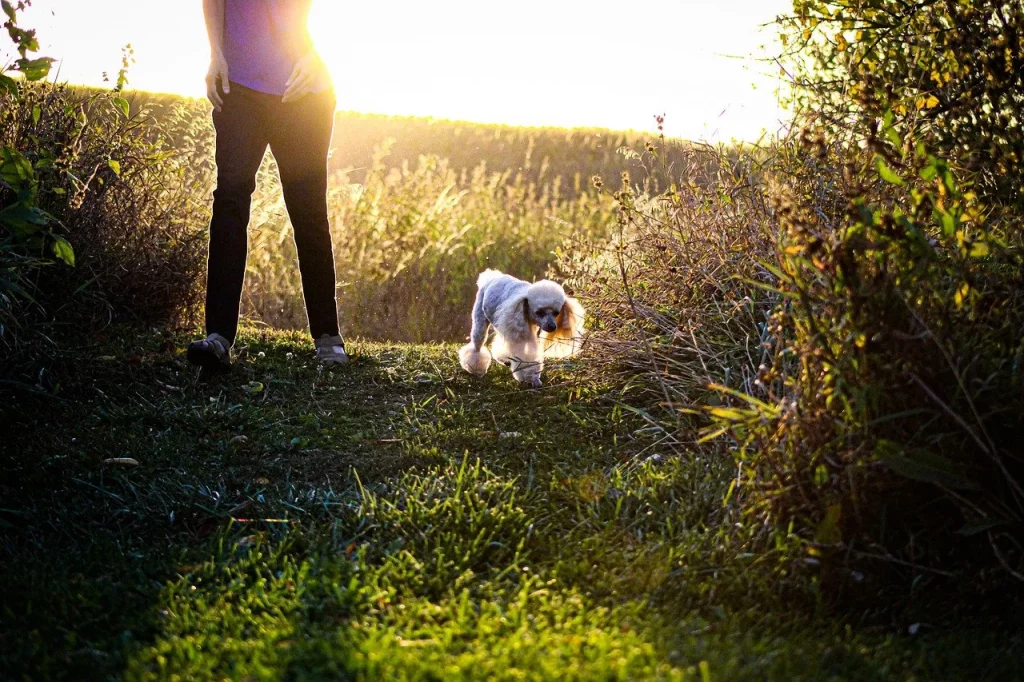 When you take your leash off your puppy, he will get excited and run around. Taking off the leash is dangerous and life-threatening for your puppy, especially when you do not have much control over them.
When you take your leash off your puppy, he will get excited and run around. Taking off the leash is dangerous and life-threatening for your puppy, especially when you do not have much control over them.
Training your dog to come back when off-leash
- Use cues that the dog understands and tell your dog to sit down.
- Create a distance between you and your dog and call them towards you.
- Praise- when the puppy comes, shower the puppy with praise. Repeat this often until the dog masters this skill.
- Increase distance- Ensure to increase the distance each time.
How about Training an adopted puppy to walk on a leash? What is the process?
Training a rescue puppy skills and etiquette can be challenging, especially when they have never been on a walk before. Lea h training is an important milestone for a healthy and happy puppy. You will require a lot of patients when dealing with such a dog. In this case, take preliminary measures.-
Bonding
-
Start indoors
-
Offer treats
-
Take it slow
How do you troubleshoot some of the challenges you encounter during leash training?
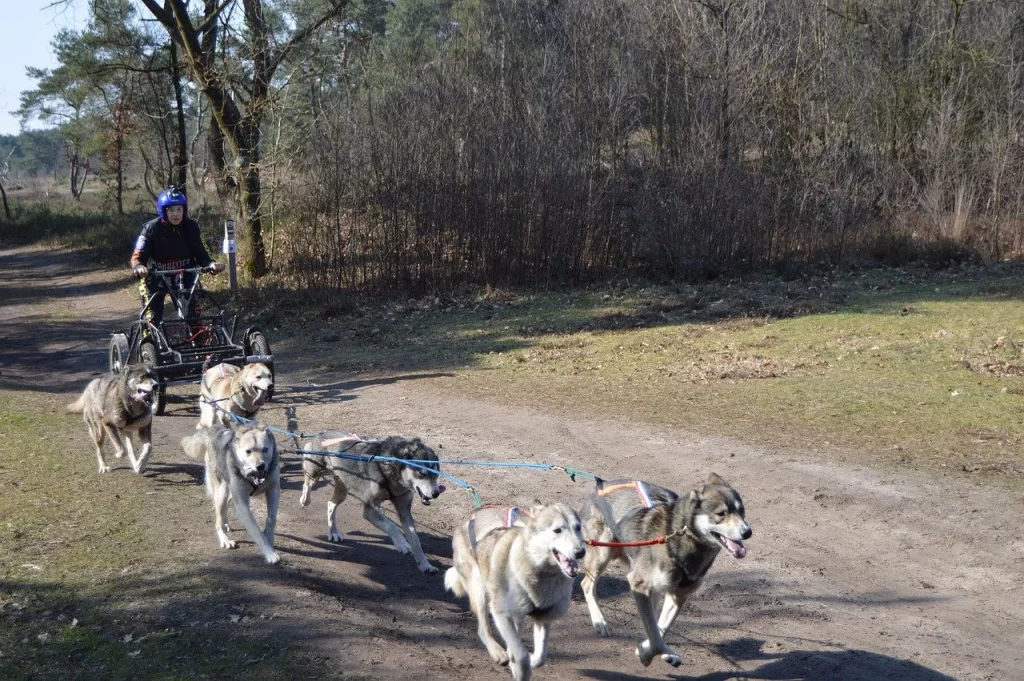 Your puppy may be learning quite well during the outdoor training session, but you may encounter some challenges. The puppy may experience sounds and smells and get distracted when they see things around them. Also, even after the puppy has been well trained and is older, they are outdoors, especially when they go to new places, grow older, or encounter new distractions. The puppy might be pulling in another direction, barking at strangers, or getting distracted during the walk. Here is how to deal with them.
Your puppy may be learning quite well during the outdoor training session, but you may encounter some challenges. The puppy may experience sounds and smells and get distracted when they see things around them. Also, even after the puppy has been well trained and is older, they are outdoors, especially when they go to new places, grow older, or encounter new distractions. The puppy might be pulling in another direction, barking at strangers, or getting distracted during the walk. Here is how to deal with them.
1. Pulling
If your puppy starts pulling in the other direction, make it boring by standing still until the puppy comes back to you.Why is your dog pulling?
Dog pulling is a natural behavior- they pull because it makes them move faster. Another reason is that your dog could be excited after spending the whole day indoors. A leash on your dog might signal time to step out. Anxiety or fear due to improper dog training- the dog might associate a leash with something negative, hence pulling.What are the consequences of pulling your puppy’s leash
Pulling the leash during training to make it walk will harm the dog over time. Your dog could develop epilepsy, eye-ear damage, or thyroid issues.How do you calm your puppy?
Your dog might get excited during leash training, primarily if they associate it with fun or time for a treat. Sometimes the puppy might get anxious, especially when in a different environment. How do you deal with it?- Massage your puppy lightly on its head, shoulder, and neck as it decreases stress.
- Give the puppy calming supplements before starting the walk
- Physical affection such as hugging your puppy should help them stay calm
2. Distraction
The puppy goes after something else while on a walk- could go after another dog, a car, or something they have never seen. What should you do if your dog lunges?- Create a significant distance between the dog and the item.
- Use a treat to distract the puppy from the item. A significant will teach your dog to shift attention to you every time it sees another dog instead of going after it.
3. Barking at other dogs
If your puppy starts barking at other dogs when outdoors, it could result from lacking enough exercise. As a dog owner, always ensure that the well-being of your dog is well taken care of; ensure the puppy gets enough exercise for his breed. How do you address this?- Offer the puppy a treat before they start barking.
- Increase the distance between your dog and the target
What are the benefits of using a leash?
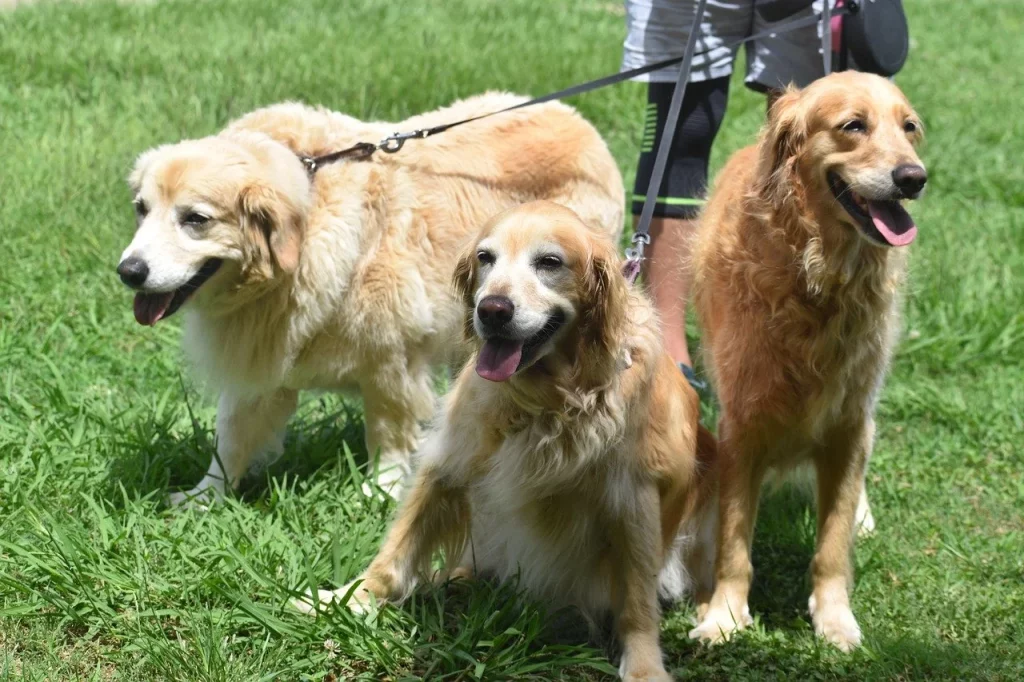
- A leash aids in puppy training and keeps the puppy safe from harm
- Provides a means to tether your dog when you cannot give them undivided attention
- It prevents your puppy from chasing other things and scaring people away, especially since some dogs like to prey.
- Provides a simple way to handle and communicate with your dog when outdoor
- It prevents the puppy from running into potentially harmful areas
- A leash protects the dog from causing accidents.
- It prevents your dog from entering inappropriate areas.
How long should the leash be?
The leash should not be longer than one foot- short enough to keep the dog close by you. A very long leash is unsuitable as it can encourage pulling and interfere with those walking around. At the same time, ensure that the leash provides freedom of movement while giving you control over your dog. Select a leash that is strong, durable, and a material that is rust-resistant, chew-proof, and lightweight.Retractable leashes
It is advisable to avoid retractable leashes during the initial training of the puppy as they can confuse the puppy. It is suitable to use once the puppy has mastered most skills and proper leash etiquette. Adjustable leashes allow one to adjust the length of the leash without constant pulling. Stable leashes provide control for the dog owner and freedom for the puppy.When your puppy has the biting leash problem
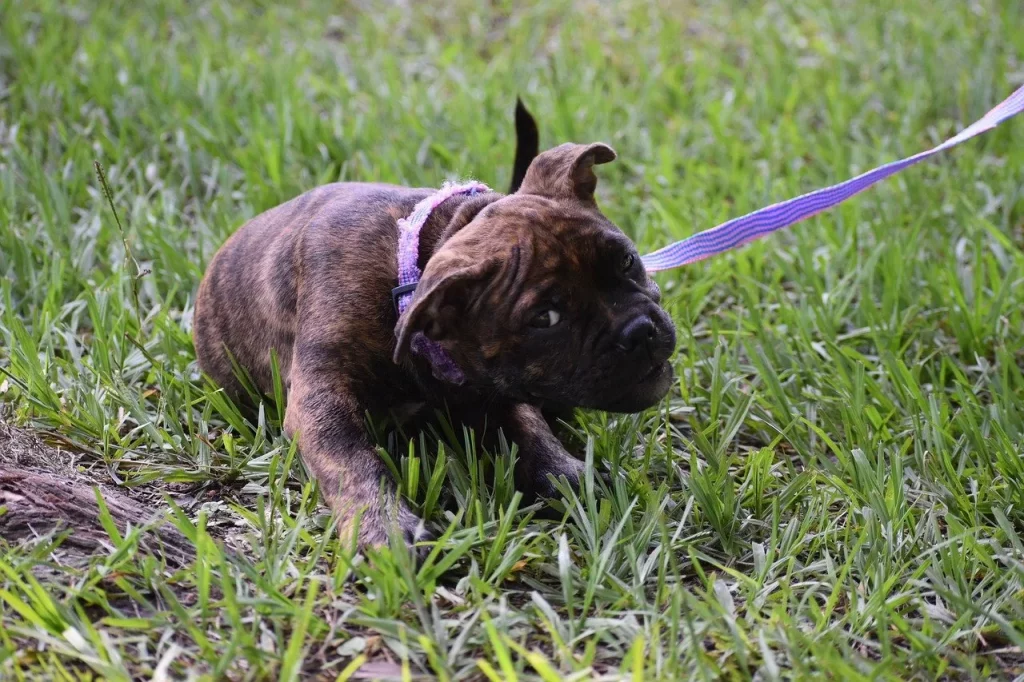 When your dog can’t stop chewing on a leash, it can cost you a lot in the long run and can create a negative relationship between you and your dog. It might lead to negative behavior such as dog biting.
When your dog can’t stop chewing on a leash, it can cost you a lot in the long run and can create a negative relationship between you and your dog. It might lead to negative behavior such as dog biting.
Why is your puppy biting on the leash?
Different emotions can cause this behavior, such as boredom and frustration. Your puppy could be playing just as they do with other toys- they always bite and tug on them. Also, since leash training is associated with play, they are likely to take it as a play item.- When you are walking your puppy, and they start biting the leash,
- Stop moving
- Use a treat to divert the attention to you.
- Make the dog do the trick or a treat, then reward that behavior instead. Always reward the behavior you want and do not punish bad behavior.
- Have an alternative biting toy at home. Pro-tip, have treats embedded in the biting toy. This way, they will find leash biting to be boring.
- Engage your dog more by playing with them before leash training so that they may be calmer during it. Your dog could be bored and need extra attention.
- Start behavior correction early- as soon as you notice it is better than later.
When your puppy refuses to walk on the leash
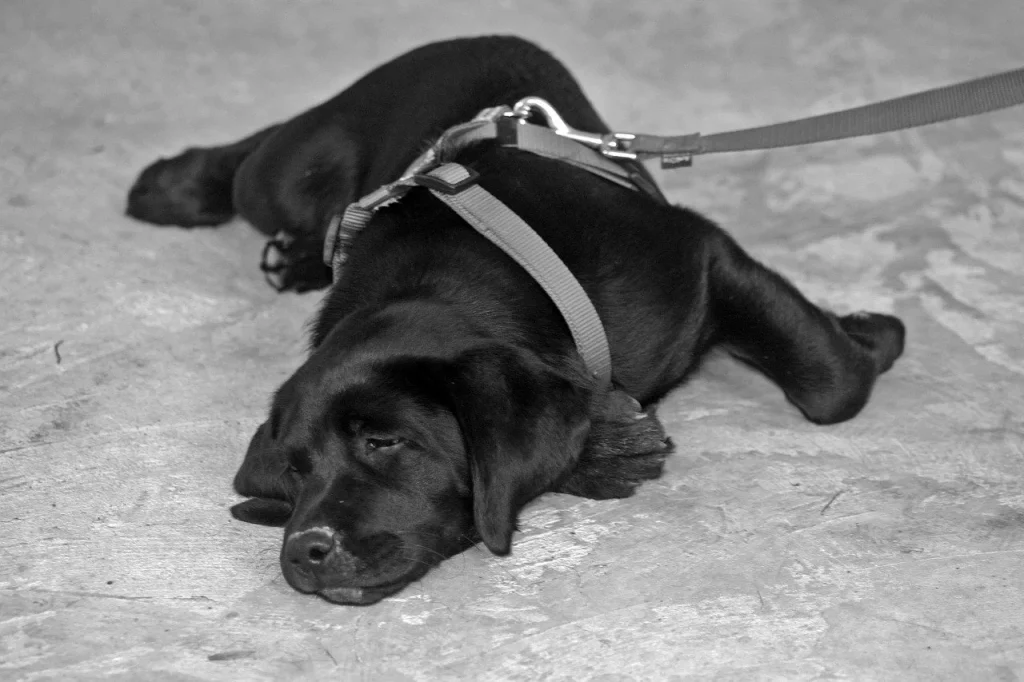 Sometimes, the puppy might refuse to walk and pull backward. Several tricks can help your puppy walk on a leash.
Sometimes, the puppy might refuse to walk and pull backward. Several tricks can help your puppy walk on a leash.
- Enroll in a dog training class- this will provide the opportunity for
- Drive your puppy to a new location; this will encourage them to explore.
- Carry your puppy a few meters away from home and let them walk back. Returning to safety will encourage them to walk on the leash.
- Offer the puppy a high-value treat and only make it available during leash walking sessions. Accompany this with a lot of praise. Your puppy will be motivated to walk to earn the special treat.
- Stay upbeat during the walk. Puppies or any other dog will sense your emotions, impacting their perception of leash walking.
- Keep your walks short and fun, and avoid physical exhaustion as much as possible.
- Choose the right leash and collar. The collar might be too tight and uncomfortable, promoting resistance towards leash training.
- Correct walking problems that may be causing the dog to resist leash walking, such as changing the environment. The dog could be frightened by something in the area where leash training occurs.
- Check the puppy’s feet for thorns, injuries, or swellings and seek medical attention. Stop the leash training session and resume when the puppy heals.
- Repetition and refreshment- offer the dog more frequent walks to remind the dog about proper leash manners.
- Pick up the pace if the puppy gets distracted by things around them.
Conclusion
Leash training your puppy can be an easy or difficult task depending on how you motivate the puppy. Understanding your puppy’s needs and encouraging positive behavior will take you further faster. Train your puppy appropriately, and it will make your walking sessions easy.Recommended Reading
- How To Training A Dog To Pee Outside Step By Step
- How To Stop Your Puppy From Biting: Ultimate Guide
- Why Do Dogs Like To Cuddle? Fascinating Reasons
